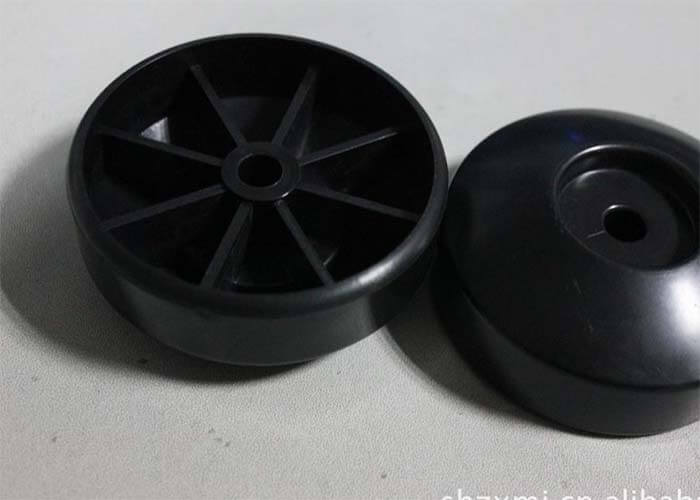After reading the How to do if plastic parts are brittle in processing article. You will learn the three methods to solve it.
What to do if plastic parts are brittle in processing?
First. Brittleness defect performance
Brittleness refers to parts that are easy to crack or break in certain parts. The brittleness is mainly due to the degradation of the material, which leads to the chain scission of the macromolecules, which reduces the relative molecular mass of the macromolecules, thereby reducing the overall physical properties of the polymer.
Second. Reasons for the brittleness of plastic products
A large part of the brittleness of the product is caused by internal stress. There are many reasons for the brittleness of products, mainly in the following 5 aspects.
1. Equipment
(1) There are dead or obstacles in the barrel, which can easily cause the melt to degrade.
(2) The plasticizing capacity of the machine is too small, and the plastic is not fully plasticized in the barrel; the plasticizing capacity of the machine is too large, and the time for the plastic to be heated and sheared in the barrel is too long.
(3) The ejector device is inclined or unbalanced, and the cross-sectional area or distribution of the ejector rod is improper.
2. Mould
(1) If the gate is too small, consider adjusting the gate size or adding an auxiliary gate.
(2) If the shunt is too small or the configuration is improper, try to arrange a reasonable balance or increase the size of the shunt.
(3) Poor mold structure causes an abnormal injection cycle.
3. Process
(1) The temperature of the barrel and nozzle is too low and should be adjusted higher. If the material is easy to degrade, the temperature of the barrel and nozzle should be increased.
(2) Reduce the screw pre-plastic back pressure and speed, make the material slightly loose, and reduce the degradation of the plastic due to shearing overheating.
(3) Mold temperature is too high, demoulding is difficult; mold temperature is too low, the plastic is cooled prematurely, the weld seam is not fused well, and it is easy to crack, especially for high melting point plastics such as polycarbonate.
(4) The cavity and core must have proper demoulding inclination. When the core is difficult to demold, increase the cavity temperature and shorten the cooling time. Love you; when the cavity is difficult to demold, lower the cavity temperature and extend the cooling time.
(5) Minimize the use of metal inserts. For brittle plastics such as polystyrene, which has a large heat and cold specific capacity, insert injection molding should not be used.
4. In terms of raw materials
(1) The raw materials are mixed with other impurities or doped with inappropriate or excessive solvents or other additives.
(2) Some plastics, such as ABS, will undergo a catalytic cracking reaction with water vapor when heated under damp conditions, causing large strains on the parts.
(3) Too many times of plastic recycling, too much content of recycled materials, or too long heating time in the barrel, will cause the parts to be brittle.
(4) The quality of the plastic itself is not good, for example, the relative molecular mass distribution is large, and the components containing uneven structures such as rigid molecular chains occupy too much; or the contamination by other plastics, bad additives, dust, and impurities are also causing the reason for the brittleness development.
5. Product design
(1) The product has sharp corners, gaps, or parts with large differences in thickness that are prone to stress cracking.
(2) The product design is too thin or too much hollow.
Third. The improvement methods are as follows
Material-Set appropriate drying conditions before injection molding; if the plastic is dried for several days or the drying temperature is too high, although volatiles and other substances can be removed, it is also easy to cause material degradation, especially heat-sensitive materials.
Reduce the use of recycled materials and increase the proportion of virgin materials; use high-strength plastics, mold design, and increase the size of main runners, runners, and gates. Too small runners, runners, or gates can easily lead to excessive shear cut heat, which leads to the decomposition of the polymer;
For the injection molding machine, choose a well-designed screw to make the temperature distribution more even during plasticization. If the temperature of the material is uneven, too much heat will easily accumulate locally, leading to degradation of the material.
Process conditions, reduce the temperature of the barrel and nozzle;
Reduce the backpressure, screw speed, and injection speed, reduce the generation of excessive shear heat, and avoid polymer decomposition; if it is brittle due to insufficient melting line strength, you can increase the melt temperature and increase the injection pressure. Improve melting mark strength.
You may also be interested in the below articles.
Summary Of 50 Injection Mold Structure Operation Dynamic Diagrams
Auto Parts Stamping Die Design Concept




